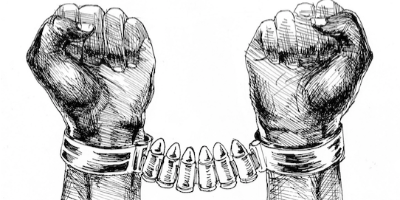19 feb 1942 anni - Japanese Internment Camps
Descrizione:
The internment of Japanese Americans in the United States during World War II was the forced relocation and incarceration in concentration camps in the western interior of the country of between 110,000 and 120,000 people of Japanese ancestry, most of whom lived on the Pacific coast. Sixty-two percent of the internees were United States citizens. These actions were ordered by President Franklin D. Roosevelt shortly after Imperial Japan's attack on Pearl Harbor.Japanese Americans were incarcerated based on local population concentrations and regional politics. More than 110,000 Japanese Americans in the mainland U.S., who mostly lived on the West Coast, were forced into interior camps. However, in Hawaii, where 150,000-plus Japanese Americans composed over one-third of the population, only 1,200 to 1,800 were also interned. The internment is considered to have resulted more from racism than from any security risk posed by Japanese Americans.Those who were as little as 1/16 Japanese and orphaned infants with "one drop of Japanese blood" were placed in internment camps.
Roosevelt authorized the deportation and incarceration with Executive Order 9066, issued on February 19, 1942, which allowed regional military commanders to designate "military areas" from which "any or all persons may be excluded." This authority was used to declare that all people of Japanese ancestry were excluded from the West Coast, including all of California and parts of Oregon, Washington, and Arizona, except for those in government camps. Approximately 5,000 Japanese Americans relocated outside the exclusion zone before March 1942, while some 5,500 community leaders had been arrested immediately after the Pearl Harbor attack and thus were already in custody. The majority of nearly 130,000 Japanese Americans living in the U.S. mainland were forcibly relocated from their West Coast homes during the spring of 1942.
According to a 1943 War Relocation Authority report, internees were housed in "tar paper-covered barracks of simple frame construction without plumbing or cooking facilities of any kind". The spartan facilities met international laws, but left much to be desired. Many camps were built quickly by civilian contractors during the summer of 1942 based on designs for military barracks, making the buildings poorly equipped for cramped family living.[citation needed] Throughout many camps, twenty-five people were forced to live in space built to contain four, leaving no room for privacy.
On December 18, 1944, the Supreme Court handed down two decisions on the legality of the incarceration under Executive Order 9066. Korematsu v. United States, a 6–3 decision upholding a Nisei's conviction for violating the military exclusion order, stated that, in general, the removal of Japanese Americans from the West Coast was constitutional. However, Ex parte Endo unanimously declared that loyal citizens of the United States, regardless of cultural descent, could not be detained without cause. In effect, the two rulings held that, while the eviction of U.S. citizens in the name of military necessity was legal, the subsequent incarceration was not—thus paving the way for their release.
Many internees lost irreplaceable personal property due to restrictions that prohibited them from taking more than they could carry into the camps. These losses were compounded by theft and destruction of items placed in governmental storage. Leading up to their incarceration, Nikkei were prohibited from leaving the Military Zones or traveling more than 5 miles (8.0 km) from home, forcing those who had to travel for work, like truck farmers and residents of rural towns, to quit their jobs. Many others were simply fired for their "Jap" heritage.
On February 24, 1983, the commission issued a report entitled Personal Justice Denied, condemning the internment as unjust and motivated by racism and xenophobic ideas rather than factual military necessity.Internment camp survivors sued the federal government for $24 million in property loss, but lost the case. However, the Commission recommended that $20,000 in reparations be paid to those Japanese Americans who had suffered internment.
On August 10, 1988, U.S. President Ronald Reagan signed the Civil Liberties Act of 1988, which had been sponsored by Representative Norman Mineta and Senator Alan K. Simpson, who had met while Mineta was interned at Heart Mountain Relocation Center in Wyoming. It provided financial redress of $20,000 for each surviving detainee, totaling $1.2 billion.
On September 27, 1992, the Civil Liberties Act Amendments of 1992, appropriating an additional $400 million to ensure all remaining internees received their $20,000 redress payments, was signed into law by President George H. W. Bush.
Aggiunto al nastro di tempo:
Data:
19 feb 1942 anni
Adesso
~ 83 years ago
